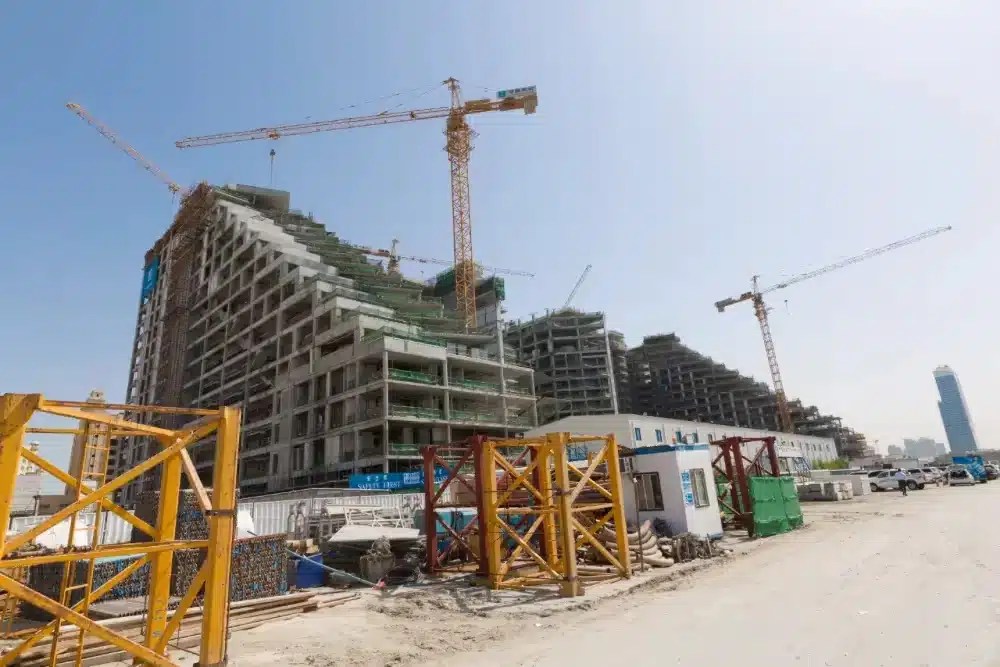Hotel Construction Trends 2025: Growth, Innovation, and the Role of SiteMap®
The hotel construction landscape in the United States is progressing with measured momentum, shaped by evolving market conditions and strategic investment patterns. While overall development has moderated compared to earlier forecasts, the sector continues to advance, particularly in segments such as group travel and business transient.
This steady pace of growth is supported by ongoing infrastructure enhancements and a continued focus on operational efficiency.

Developers across the U.S. are leveraging data-driven tools, sustainable design, and strategic planning to navigate a transforming hospitality landscape, with hotel construction steadily advancing in key markets.
Development Pipeline Reflects Strategic Growth
According to Lodging Econometrics’ Spring 2025 report, the U.S. hotel construction pipeline includes 6,376 projects totaling 749,561 rooms, reflecting a 5% year-over-year increase in project count and a 6% increase in room volume. This growth underscores the industry’s long-term confidence and strategic investment in hospitality infrastructure.
Currently, 1,152 projects with 145,368 rooms are under construction – representing a 1% increase in projects and a 3% increase in rooms compared to the previous year. The Upper Midscale and Upscale segments remain the most active, with 2,338 projects (226,349 rooms) and 1,443 projects (179,295 rooms), respectively. These categories continue to attract developers due to their operational efficiency and broad market appeal.
In total, 953 new hotels representing 108,366 rooms are expected to open in 2025, reinforcing the sector’s steady forward momentum.
Extended-Stay Segment Drives Strategic Development
Extended-stay hotels continue to represent a vital component of the U.S. hotel construction pipeline. This growth is driven by sustained demand from business travelers, relocating professionals, and guests seeking longer-term accommodations. According to 2024 data from Lodging Econometrics, extended-stay properties accounted for approximately 36% of all hotel projects under construction, highlighting their strategic role in the development landscape.
This segment is expected to maintain its growth trajectory, with 363 new extended-stay hotels projected to open in 2026. Within this category, mid-tier extended-stay brands comprised 64% of all projects, reflecting a market preference for accommodations that balance affordability with comfort and functionality.
Federal Infrastructure Investment Supports Hospitality Growth
Federal infrastructure initiatives continue to shape the broader environment in which hotel development occurs. The Bipartisan Infrastructure Law, which allocates $550 billion through fiscal year 2026, is enhancing transportation systems, broadband access, and utilities. Factors that contribute to increased tourism and regional economic activity. These improvements create favorable conditions for hotel development, particularly in emerging and underserved markets.
Sustainable and Smart Hotel Designs Define the Future
Sustainability and intelligent design are now foundational elements in modern hotel construction. Developers are prioritizing eco-efficient materials, renewable energy systems, and low-carbon construction practices to meet evolving environmental standards and guest expectations. These innovations align with global sustainability goals and contribute to long-term operational efficiency.
Simultaneously, the integration of smart technologies is transforming both construction and guest experience. Features such as keyless entry, automated room controls, and AI-driven personalization are becoming standard in new developments – particularly within upscale and luxury segments. These advancements enhance convenience, improve energy management, and elevate the overall guest journey.
Geographic Distribution and Market Dynamics
Hotel construction activity in the U.S. remains concentrated in regions with strong economic fundamentals and sustained tourism demand. New York City, Los Angeles, and Miami continue to lead in development volume, supported by robust infrastructure, international travel flows, and large-scale urban revitalization projects.
At the same time, secondary and emerging markets are gaining momentum. Cities like Nashville, Austin, and Charlotte are experiencing a surge in hotel development, particularly within the midscale and upper midscale segments. These markets benefit from expanding populations, growing reputations as business and cultural hubs, and increasing demand for flexible, high-quality accommodations.
A Data-Driven Path Forward
The U.S. hotel market is positioned for continued expansion through 2026. According to Lodging Econometrics, 740 new hotels with 83,548 rooms are projected to open by the end of 2025, followed by 848 hotels with 92,892 rooms in 2026. This represents a 1.5% and 1.6% increase in supply, respectively, signaling sustained confidence in the hospitality sector’s long-term trajectory.
This growth is expected to be supported by declining interest rates, which are likely to accelerate the transition of projects from early planning to active construction. As developers respond to evolving traveler expectations, economic shifts, and technological innovation, the industry continues to demonstrate resilience and adaptability.
Key trends, such as the rise of extended-stay accommodations, the integration of sustainable and smart design, and the influence of federal infrastructure investments are shaping a more agile and future-ready hospitality landscape.
As developers prepare for this next wave of growth, the ability to manage complex construction data and infrastructure planning becomes essential. That’s where SiteMap® (patent pending) plays a transformative role. SiteMap is an interactive software solution that centralizes all project and facility data into a single, intuitive platform.
SiteMap integrates GPRS’ full suite of services – including subsurface damage prevention, existing conditions documentation, and construction and facilities project management – into one cohesive system. SiteMap captures, organizes, and visualizes critical infrastructure data.
This capability is especially valuable in complex, high-risk environments. During the planned demolition of a historic Las Vegas hotel, GPRS Project Managers used advanced locating and inspection technologies to map buried utilities and assess underground infrastructure. All of this field-verified data was uploaded into SiteMap, where it could be securely accessed and shared by all project stakeholders – enabling a safer, more efficient demolition process with no surprises.
By consolidating accurate as-built records and enabling seamless collaboration, SiteMap empowers hotel developers to reduce risk, accelerate timelines, and build with confidence – ensuring every project is grounded in precision and protected from the ground up.
